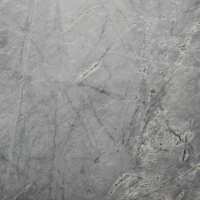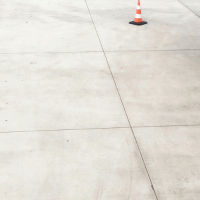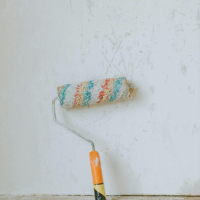Introduction
Choosing the right concrete floor finish for your home involves considering various factors such as aesthetics, functionality, and cost-effectiveness. Understanding the different types of finishes available and their specific applications can guide the selection process. Here are some key considerations and options based on recent research.
Types of Concrete Floor Finishes
Coating and staining are widely recognised options in surface finishes, particularly valued for their aesthetic charm and budget-friendly nature. Coatings, which serve as protective layers, not only enhance the durability of surfaces but also provide a shield against wear and environmental factors. These coatings can be formulated in various finishes, including matte, gloss, or satin, allowing for customisation based on a space’s desired look and feel. On the other hand, stains are celebrated for their extensive palette of colour choices, which allow homeowners and designers to enhance the visual appeal of various environments. Whether applied to interior spaces such as living rooms and kitchens or to outdoor areas like patios, both coatings and stains can significantly contribute to the overall ambience and character of these settings, making them more inviting and aesthetically pleasing, as noted by El-Sherbiny in 2011.
Engraved and stencilled designs offer a layer of sophistication and artistic expression when applied to concrete floors. These finishes transform plain concrete surfaces into visually striking elements, making them particularly appropriate for high-traffic areas where design considerations are paramount. The versatility of these decorative techniques allows for various styles, from modern to traditional, ensuring that each space can reflect its inhabitants’ personal taste and design vision. As highlighted by El-Sherbiny in 2011, adding such decorative elements can significantly enhance the aesthetic appeal of a room, making it not only functional but also an expression of individuality and style.
Material Composition and Properties
Epoxy resin-based finishes are widely recognised for their outstanding adhesive qualities, enabling them to bond effectively to various surfaces. Additionally, these finishes exhibit self-smoothing characteristics that result in a visually attractive and uniform application. The inherent surface hardness of epoxy resin makes it resistant to scratches and impacts, ensuring a longer lifespan for the finished product. These finishes’ efficacy is further enhanced by incorporating micro silica and silane coupling agents, which boost adhesion and durability. As a result, epoxy resin-based finishes are particularly well-suited for use in wet environments, such as bathrooms and kitchens, where moisture resistance and ease of cleaning are crucial (Won et al., 2013).
Cement and sand-based finishes offer a different yet complementary approach to surface applications. This type of finish is formulated with a blend of cement and sand, augmented by additives such as methylcellulose and silicone antifoaming agents. These additives significantly improve adhesion properties, ensuring the finish adheres securely to the underlying surface, even in challenging conditions. Moreover, the anti-stripping characteristics of cement and sand-based finishes make them particularly valuable in areas subjected to heavy foot traffic. Their robust formulation allows them to withstand the rigours of high-traffic environments without compromising their integrity or aesthetic appeal (Bom-Il, 1995).
Application Techniques
Mechanical finishing is a technique that employs specialised machines equipped with rotary shafts and blades to achieve a smooth and uniform surface finish on various materials. This method is particularly advantageous when working on large surface areas, as it allows for consistent results while enhancing the finished product’s durability. The precision these machines offer minimises the risk of imperfections, ensuring that the final surface meets aesthetic standards and possesses the resilience needed for long-term use. Watanabe et al. (1995) highlight the effectiveness of this approach, emphasising its ability to produce high-quality finishes that can withstand wear and tear over time.
Incorporating soundproof and dustproof layers between structural slabs in multi-story homes enhances overall living comfort. This construction method focuses on significantly diminishing noise transmission in densely populated areas or buildings with multiple units. Integrating synthetic resins and sound-insulating sheets within the construction framework improves the acoustic properties of the building. Talk (2002) underscores the effectiveness of this approach, noting that such layers not only help reduce disruptive sounds from neighbours or the outside environment but also contribute to a cleaner and more tranquil living space by minimising dust infiltration. This dual function of soundproofing and dust proofing is essential for creating an environment conducive to relaxation and well-being in contemporary residential designs.
Conclusion
When exploring the various options for selecting the most suitable concrete floor finish, it is essential to recognize that these choices serve as a comprehensive guide to make an informed decision. However, it is equally crucial to consider your home environment’s unique requirements and characteristics. This personalized approach ensures that the selected finish aligns not only with the practical aspects of the space but also with your taste and lifestyle.
One important consideration is the climate in which you reside. Different finishes may respond differently to environmental conditions such as temperature fluctuations, humidity levels, and exposure to sunlight. For example, in areas with high humidity, certain products might be prone to mould or mildew, which could impact the longevity and appearance of the flooring.
Additionally, the intended use of the space plays a significant role in guiding your choice. High-traffic areas may require more durable finishes that can withstand wear and tear, while spaces designated for relaxation or entertainment may benefit from finishes emphasising aesthetics and comfort. Understanding how the space will be utilised can significantly influence the effectiveness of the finish selected.
Personal aesthetic preferences are a crucial factor that cannot be overlooked. The visual impact of a concrete floor finish powerfully shapes a room’s overall look and feel. Factors such as colour, texture, gloss level, and pattern should resonate with your design vision, contributing to a cohesive aesthetic throughout your home. By taking the time to reflect on these individual elements, you can make a decision that meets practical needs and enhances the beauty of your living spaces, empowering you to create a home that truly reflects your style.
In summary, while the options available for concrete floor finishes provide a solid foundation for your decision-making process, a thorough consideration of specific factors—including climate, intended usage, and personal style—is paramount. This holistic approach ensures that the chosen finish complements your home’s functionality and visual appeal, giving you the confidence that your decision is well-informed and comprehensive.






